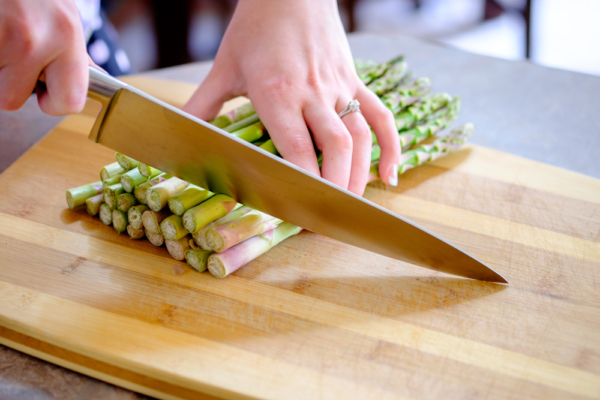People inevitably use cutting boards when cooking to chop meat or vegetables. If not cleaned thoroughly, over time, tiny bits of food residue will stick to the cutting board, leading to unpleasant smells and bacterial growth that can pose health risks. Recognizing this issue, experts have shared two natural ways to clean cutting boards using common household items, which are safer alternatives to using artificial cleaning agents.
Cutting boards used by people can be made of various materials, including wood, plastic, glass, steel, or marble. However, one type of material that may harbor dirt and grime, causing “hidden troubles,” is wooden cutting boards.
The “Good Food” program team from the British Broadcasting Corporation (BBC) cautioned that wooden cutting boards have the ability to harbor bacteria. To assist in cleaning these boards, the program’s experts shared a method using natural cleaning agents free of chemicals. All you need are lemons and salt.
The program recently shared a short video on Instagram demonstrating this method. Their post stated, “Did you know your wooden cutting board can harbor all sorts of hidden dirt? Use our chemical-free cleaning secret with inexpensive lemons and salt for regular cleaning – in just 5 minutes, harmful bacteria can be kept at bay!”
The team in the video explained, “Is your wooden cutting board starting to smell? If so, you can easily kill any lurking dirt and give it a fresh start without using harsh chemical cleaners.”
They elaborated, “All you need is a lemon and some salt. Here, we’re using coarse salt. Sprinkle salt on the cutting board. Then, with half a lemon, slowly move it across, allowing it to seep into the wood grain while gently squeezing to release some juice.”
They mentioned that the salt dissolves into a thick paste, which helps kill any bacteria lurking in the scratches while also deodorizing the board. Don’t forget to clean both sides and the edges of the cutting board.
After letting it sit for a few minutes, rinse off everything on the cutting board with hot water, making sure to remove the lemon pulp. Next, thoroughly wipe the cutting board with a tea towel, allow it to air dry completely, and then store it. Once the board is dry, you can also apply a thin layer of vegetable oil to seal and nourish the wood.
Regarding the method introduced by the team, some netizens expressed their approval and even saved the method as they had been searching for ways to clean cutting boards. However, a self-proclaimed traditional carpenter stated that he has been making cutting boards for years. According to his experience, wooden cutting boards should not be coated with vegetable oil as it can turn rancid, causing the wood to eventually discolor and become sticky.

